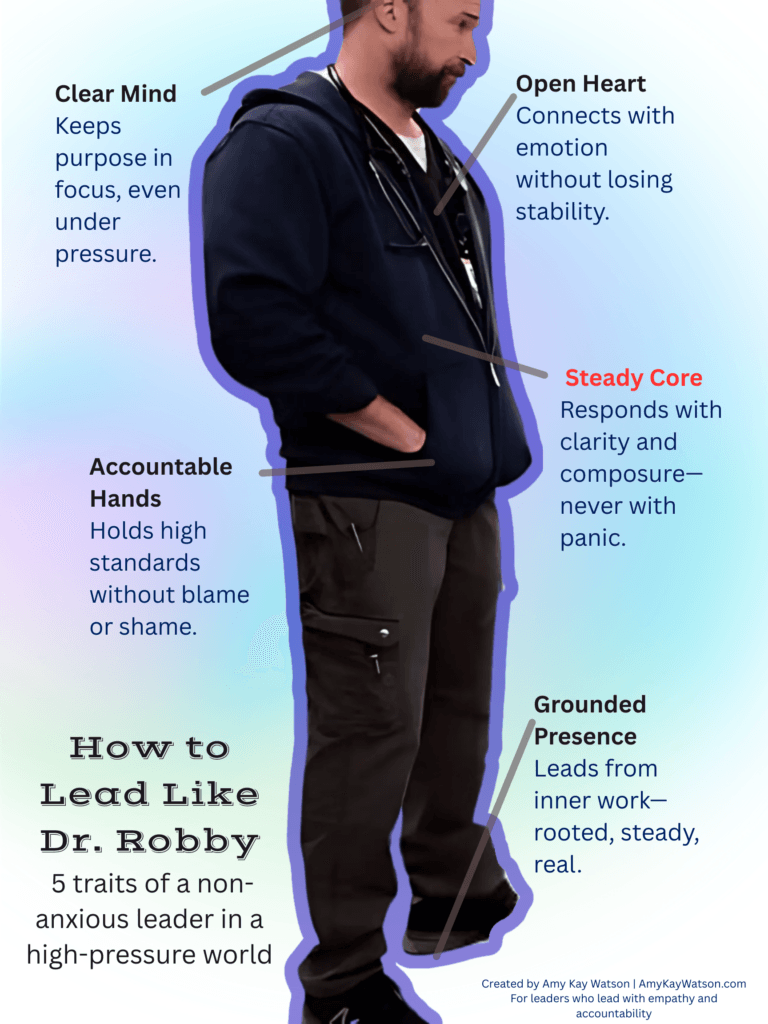Listen as a Podcast
If you’ve watched The Pitt, you already know: Dr. Robby (played by Noah Wyle) is the heartbeat of the Pitt. In a space defined by chaos, trauma, and split-second decisions, his presence is calm, clear, and profoundly human. He leads a team through the most intense situations imaginable without losing his composure or compassion. So how does he do it? And what can the rest of us learn?
For much of the series (first season), Dr. Robby’s leadership embodies what family systems theorist Edwin Friedman called a “non-anxious presence” — the ability to stay grounded in purpose and values without getting swept up in emotional reactivity. Here’s how to lead like Dr. Robby:
1. Differentiate Without Disconnecting
Dr. Robby doesn’t try to fix everyone’s emotions or take them on as his own. He stays present and connected without becoming enmeshed. This allows him to offer stability in uncertain moments. He listens deeply, acknowledges pain, but doesn’t panic. This is the essence of self-differentiation: holding your own perspective while remaining emotionally available.
2. Regulate Your Emotional State
Crisis leadership begins with self-leadership. Dr. Robby has likely developed habits of emotional regulation—whether through reflective practice, support networks, or internal grounding. He models composure, not detachment. His ability to respond rather than react gives his team a blueprint for steady, ethical action.
3. Lead from a Clear Sense of Purpose
In the Pitt, there’s no time to second-guess their roles. Robby’s clarity comes from knowing his purpose: protect life, mentor the next generation, and restore dignity. That purpose becomes his compass, guiding decision-making even when the path forward isn’t obvious. When you lead from values, you reduce the influence of fear.
4. Cultivate Psychological Safety
Despite the urgency of the environment, Dr. Robby fosters an atmosphere where people can think, speak up, and make mistakes. He knows that shaming or fear only increase error. His calm tone and unwavering respect for colleagues invite others to rise to the occasion. Accountability, for Robby, is never punitive—it’s about trust and growth.
5. Do the Inner Work
A character like Dr. Robby doesn’t just happen. We can assume that his steadiness is hard-won—a product of facing his own pain, learning from failure, and continuing to grow—even as his grief occasionally pushes back against that steadiness. Non-anxious leadership isn’t just a technique; it’s a way of being that develops over time, with intention.
When you lead like Dr. Robby, you don’t just keep the wheels turning. You create a space where people feel safe, seen, and capable of rising to the challenge. You hold steady when others wobble. And in doing so, you model the kind of leadership our workplaces—and our world—urgently need.


